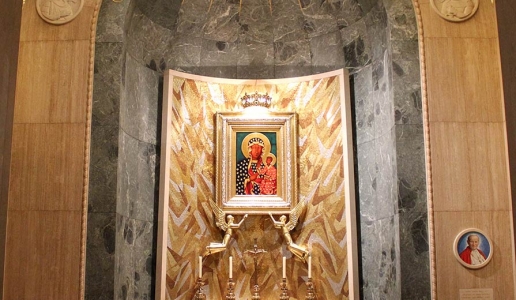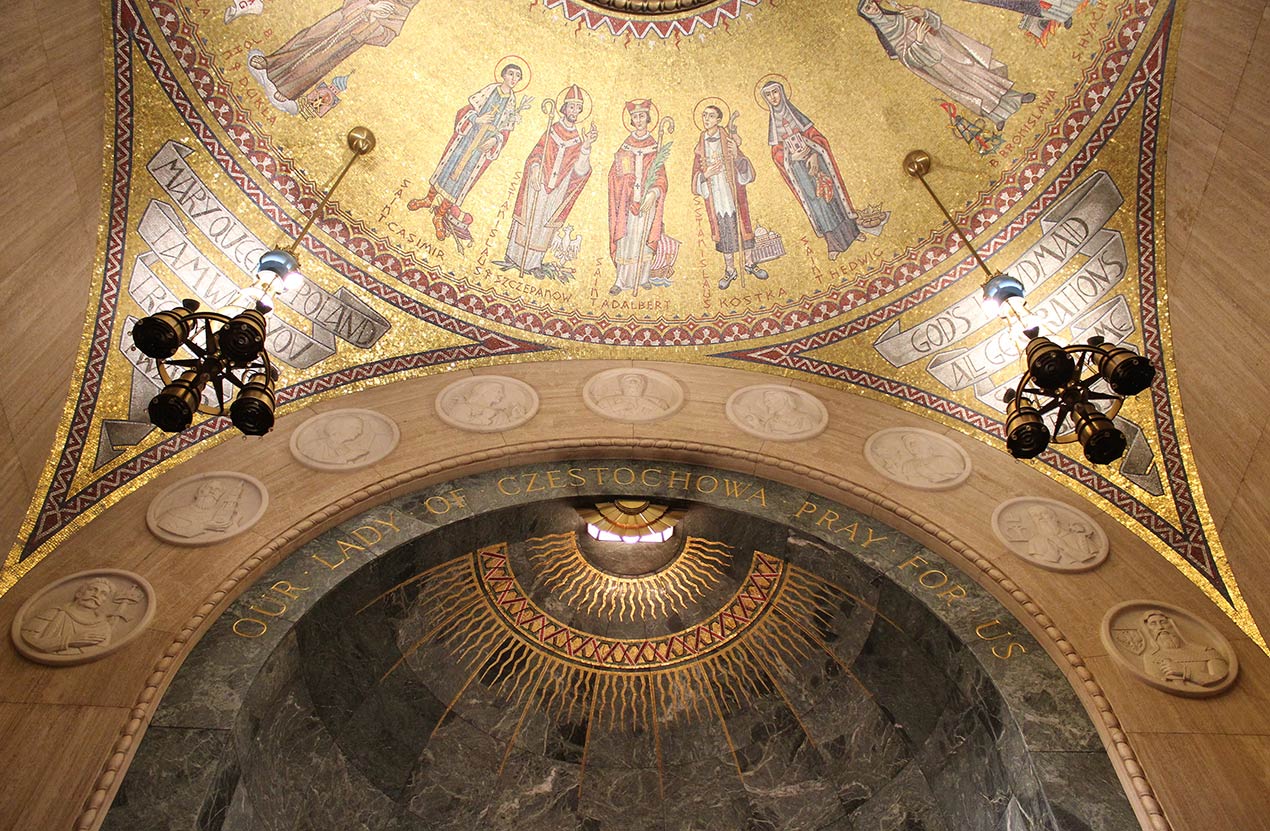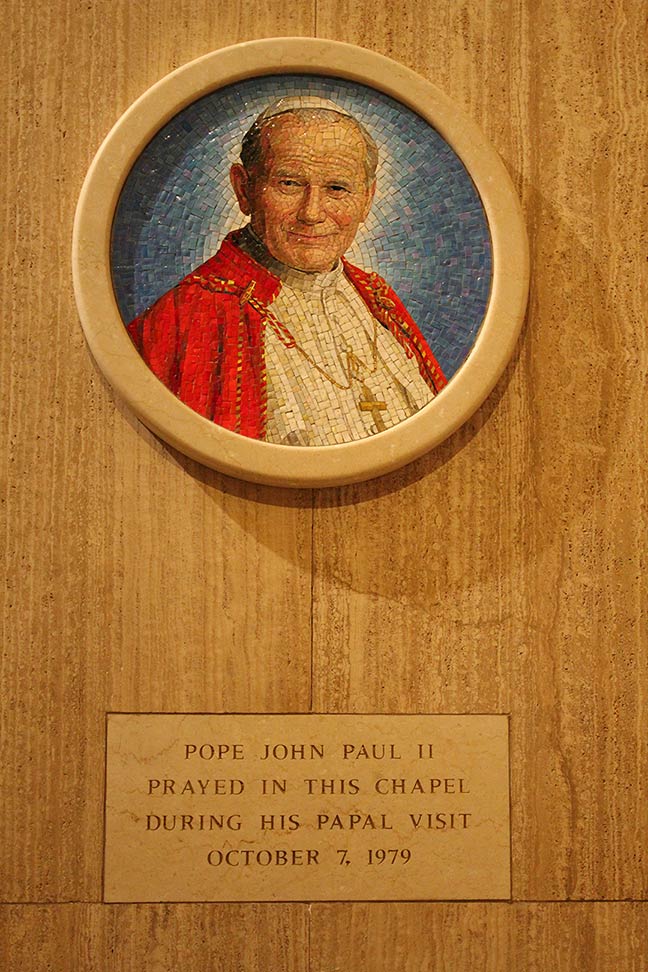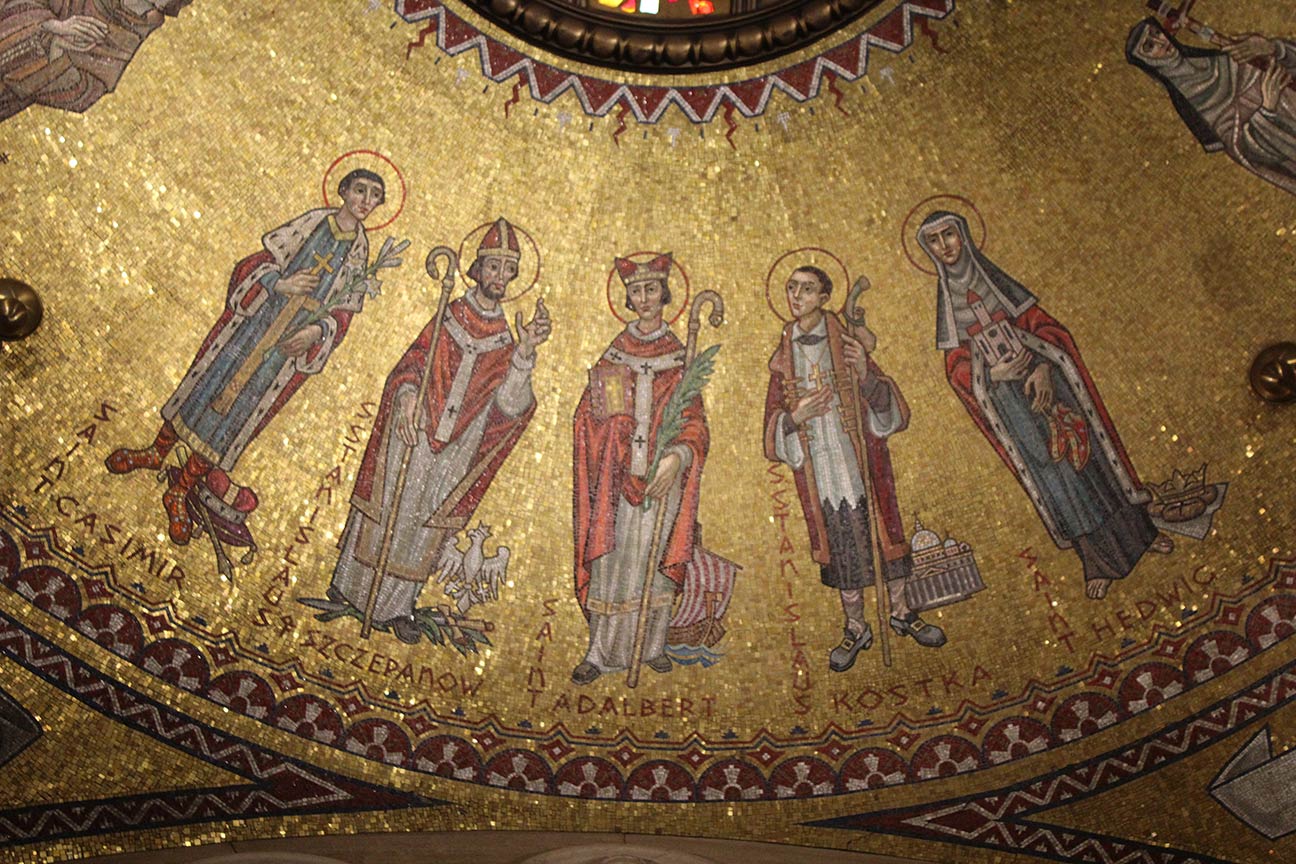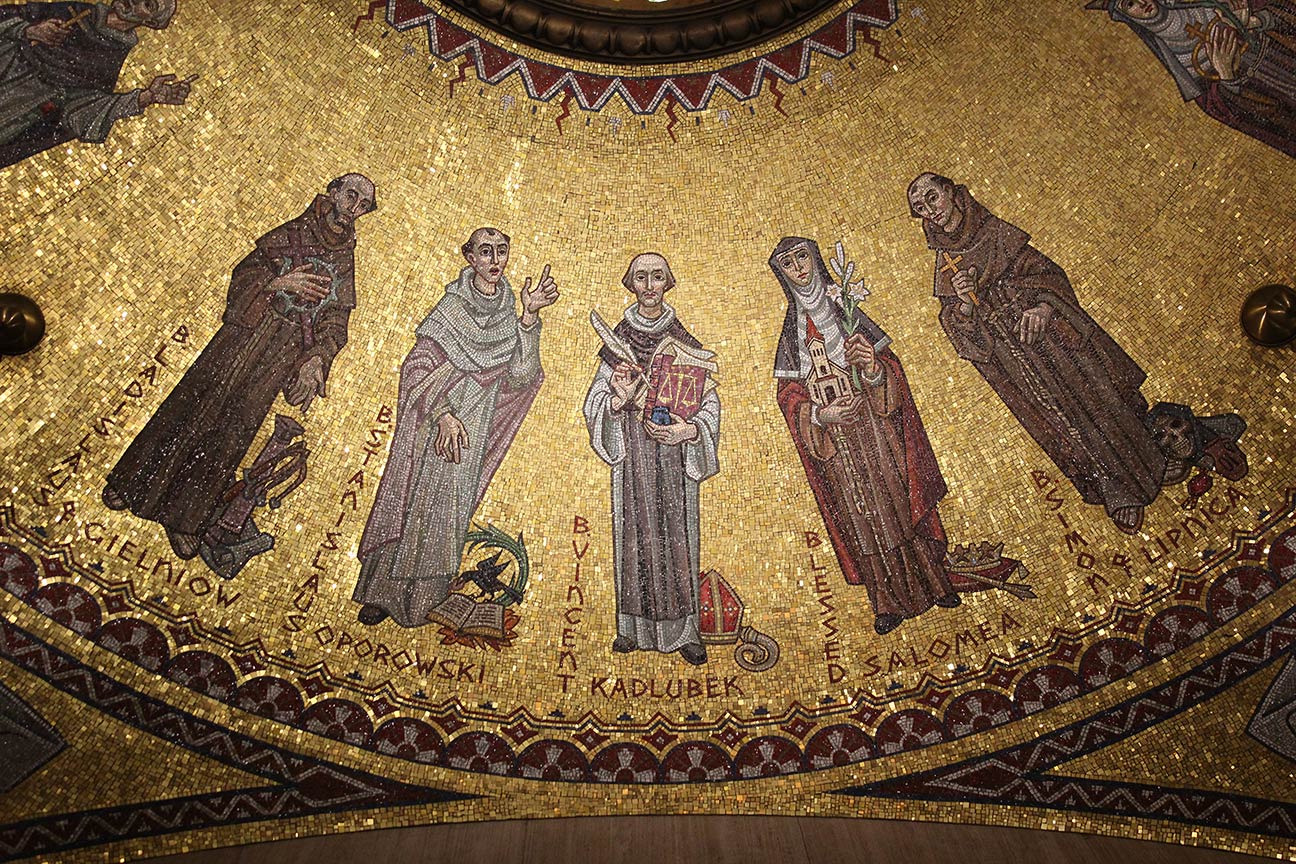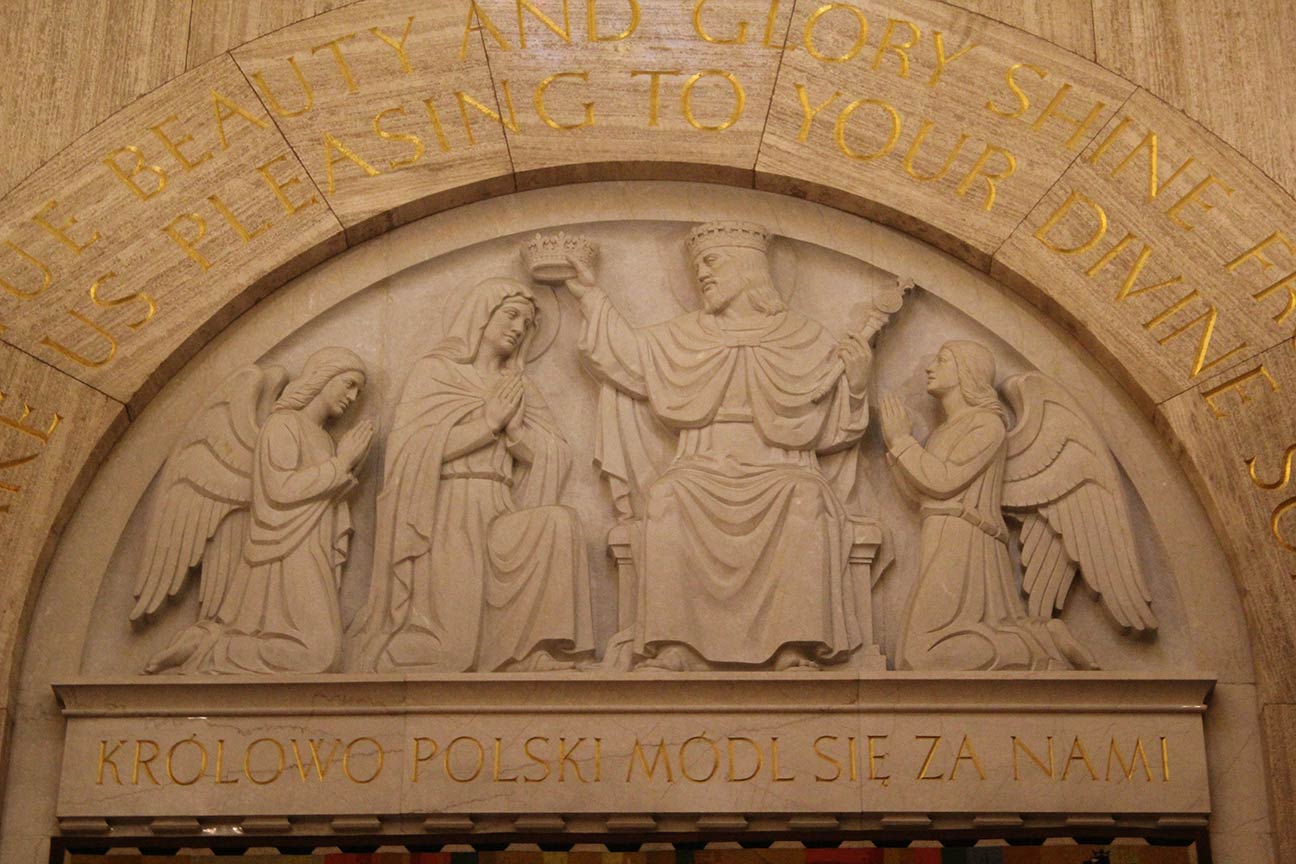Chapel of Our Lady of Czestochowa
Basilica of the National Shrine of the Immaculate Conception
Location: 400 Michigan Avenue NE, Washington, DC 20017
Metro: Red line to Brookland/CUA; there is also free parking available.
by Julián D. Ortiz-Santiago
An Act of Consecration to the Mother of God, found in the Chapel of Our Lady of Czestochowa
O Mother of God, Immaculate Mary! To thee I dedicate my body and soul, all my prayer and deed, my joys and my suffering, all that I am and all that I have. With a joyful heart I surrender myself to Thy bondage of love. To Thee will I devote my services of my own free will for the salvation of mankind, and for the help of the Holy Church whose Mother Thou art. From now on my only desire is to do all things with Thee, through Thee, and for Thee. I know I can accomplish nothing by my own strength, whereas Thou canst do everything that is the will of Thy son and Thou art always victorious. Grant, therefore, O Helper of the faithful, that my family, parish, and homeland might become in truth the kingdom where Thou reignest with Thy Son. Amen.
-Cardinal Stefan Wyszynski
The Chapel of Our Lady of Czestochowa (fig. 1) is located in the Upper Church of the Basilica of the National Shrine of the Immaculate Conception. The construction of the Basilica began with the lower portion of the church, or the Crypt Church, between 1913 and 1931. Construction of the Upper Church began in 1955 after the Great Depression and was completed in 1959. The Chapel of Our Lady of Czestochowa was built along with the construction of the Upper Church.1 Monsignor Walter R. Rossi, Basilica of the National Shrine of the Immaculate Conception, Guide and Tour Book Page 4.
When entering through the main doors of the Upper Church, the Chapel of Our Lady of Czestochowa is the third major chapel on the left. The most revered aspect of the chapel is the replica of the icon of Our Lady of Czestochowa on the back wall behind the altar (fig. 2). The original icon is located in Czestochowa, Poland, in a basilica on top of Jasna Góra hill. It is a source of great devotion in Poland and is to this day a major pilgrimage site. Legend dictates that the original image was painted by St. Luke, one of the four writers of the Gospels in the New Testament of the Bible and one of the twelve hand-picked followers of Jesus. Legend also dictates that St. Luke painted on a canvas that was wrapped around the wood of the table of the Holy Family. Conversely, historians date the icon to the Byzantine period in the sixth or seventh century, its place of origin being Constantinople.2 New Catholic Encyclopedia, Vol. 5 2nd ed. (Gale, 2003) Page 488 s.v. “Czestochowa”.
The replica, made by Polish artist Leonard Torwirt, is an exact copy of the original icon. It represents Mary and the child Jesus in the same color scheme, and uses the same materials as the original icon, painted canvas on wood. Mary is depicted in the hodegetria pose, gesturing toward the baby Jesus who is sitting on her lap.3 Monsignor Walter R. Rossi, Basilica of the National Shrine of the Immaculate Conception, Guide and Tour Book Page 77.The fleur-de-lis on her robe and mantle and the six-pointed star above her brow are symbols of her royal lineage as the Mother of God and Queen of Heaven and Earth.4 Ibid.A peculiar aspect of this image of Mary is the scarring she has on her right cheek. In 1382, the image was brought to Poland and placed in the monastery on top of Jasna Góra Hill and in 1430, robbers attacked the monastery and vandalized the icon. The result of the attack was three scars on the right cheek, two parallel and one vertical,5 New Catholic Encyclopedia, Vol. 5 2nd ed. (Gale, 2003) Page 488 s.v. “Czestochowa”.as well as six scratch marks on her neck.6 Monsignor Walter R. Rossi, Basilica of the National Shrine of the Immaculate Conception: Guide and Tour Book Page 77.In the chapel of Our Lady of Czestochowa, the replica icon has these scars. The replica icon is framed in gold repoussé, supported by sculpted angels, and crowned with a royal golden crown, all manufactured by Adrian Hamers of New York. The replica icon is set against an abstract mosaic of gold, silver, and copper tesserae (see fig. 2).7 Ibid.
On the archway above the icon and the altar, there are nine rondels created by artist by Joseph Kiselewski, depicting different saints and historical Polish figures (fig. 3). From left to right the rondels depict King John Sobieski, Archbishop Maciej Lubiński, St. Helena, St. John the Apostle, St. Joseph Spouse of Mary, St. Luke the Evangelist, St. Pope Pius the X, Abbot Koredecki, and Prince Ladislaus Opolczyk.8 Monsignor Walter R. Rossi, Basilica of the National Shrine of the Immaculate Conception: Guide and Tour Book, Page 28.
To the right of the archway at eye level is a simple, small mosaic on a marble tablet depicting the recently canonized St. John Paul II (fig. 4). This mosaic commemorates the visits that the Polish man made to the chapel first in 1976 as Archbishop of Krakow and then in 1979, three years later, as Pope John Paul II.9 Ibid.
The ceiling of the chapel is a mosaic dome. In the center of the dome is a faceted glass depiction of the white Polish Royal by Charles J. Connick.10 Ibid.Surrounding the faceted glass is a mosaic that depicts twenty saints with some sort of affiliation with Poland over the long history of Christianity in Poland. The images of the saints were designed by Ernow Koch and manufactured by Peter Recker of Weg in Germany.11 Ibid.Starting from the bottom of the dome closest to the icon going counterclockwise, the saints are: Casmir, Stakislaus Szczepanow, Adalbert, Rostka, Hedwig (fig. 5); Brokislawa, Hyacinth, Andrew Zorawek, John Kanty, Ceslaus; Ladislaus Gielniow, Stanislaus Oporowski, Vincent Kadlubek, Salomea, Simon Lipnica (fig. 6); and Kunegunda, Clement Hofbauer, Josaphat Kuncewicz, Andrew Bobola, and John Duckla. All the saints are depicted with iconography that reveal what they did in their lives. The four pendentives of the dome have mosaics with different messages inscribed. The pendetives closest to the icon seem to address Mary by saying, “Mary Queen of Poland, I am with you, I remember, I watch,” and “God’s handmaid, all generations shall call me blessed.” The lines on the pendetives farther away from the icon seemingly collaborate to form one line. The first says, “Those who love me I also love, they who seek me find me,” and the second says, “For he who finds me finds life, and favor from the Lord.”
On the right wall of the chapel are several artistic pieces. There is a very large tapestry, designed by Max Ingrand and woven by Pinton-Frères in Abusson, France, depicting Mary enthroned and surrounded by various noble people and a king kneeling before her (fig. 7). The tapestry is entitled, “Proclamation of King Jan Casimir” when King John Casimir proclaimed Mary as Queen of Poland on April first, 1659. Immediately above the brilliantly colored tapestry is an inscription in Polish that reads, “Queen of Poland pray for us.” Above that is a relief tympanum sculpted by Joseph Kiselewski entitled “Coronation of Mary” that shows Mary crowned by what seems to be King Casimir, accompanied by two angels (fig. 8).12 Ibid.
At first glance, the left wall looks identical to the right wall; the large tapestry with an inscription and relief above it were made by the same artists, yet the scenes are all different. On the tapestry, one can see the baptism of a man in a throne room. The piece is entitled “Baptism of Duke Mieszko I, A.D. 966” portraying the baptism of the nobleman who brought Christianity to Poland. Above the tapestry is a Polish inscription that translates to “Mother of God,” referring to Mary. Above the inscription is another relief tympanum entitled “Christ the King,” depicting Jesus Christ enthroned with flowing robes and a crown being adored by several of the Christian faithful.13 Ibid.
For more information visit National Shrine of the Immaculate Conception.
References
| 1. | ⇧ | Monsignor Walter R. Rossi, Basilica of the National Shrine of the Immaculate Conception, Guide and Tour Book Page 4. |
| 2. | ⇧ | New Catholic Encyclopedia, Vol. 5 2nd ed. (Gale, 2003) Page 488 s.v. “Czestochowa”. |
| 3. | ⇧ | Monsignor Walter R. Rossi, Basilica of the National Shrine of the Immaculate Conception, Guide and Tour Book Page 77. |
| 4. | ⇧ | Ibid. |
| 5. | ⇧ | New Catholic Encyclopedia, Vol. 5 2nd ed. (Gale, 2003) Page 488 s.v. “Czestochowa”. |
| 6. | ⇧ | Monsignor Walter R. Rossi, Basilica of the National Shrine of the Immaculate Conception: Guide and Tour Book Page 77. |
| 7. | ⇧ | Ibid. |
| 8. | ⇧ | Monsignor Walter R. Rossi, Basilica of the National Shrine of the Immaculate Conception: Guide and Tour Book, Page 28. |
| 9. | ⇧ | Ibid. |
| 10. | ⇧ | Ibid. |
| 11. | ⇧ | Ibid. |
| 12. | ⇧ | Ibid. |
| 13. | ⇧ | Ibid. |



